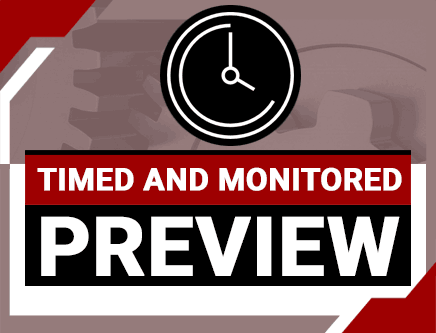A Unique and Understandable Way to Look at Three Phase Circuits (Ohio Timed & Monitored)
Credit: 3 PDH
Subject Matter Expert: Jayachandra N. Sakamuri, Electrical Engineer
In A Unique and Understandable Way to Look at Three Phase Circuits , you'll learn ...
- Definitions of specific electrical terms
- Relationship between voltage, current, and power versus time for alternating current circuits
- How to determine currents in three phase circuits when voltages and loads are known
- How to replace a Delta three phase source with a Wye three phase source and vice versa
Overview

To meet the Ohio Board's intent that online courses be "paced" by the provider, a timer will be used to record your study time. You will be unable to access the quiz until the required study time of 150 minutes has been met.
Credit: 3 PDH
Length: 55 pages
This course was writen with the intention of removing the magic and mystique that surrounds the idea of three phase circuits. With that in mind, this course starts by reviewing single phase alternating current circuits including resistive, capacitive, and inductive circuits. This is a quick review emphasizing voltage, current, and power relationships in these three common circuit elements. Waveforms and their relationship to vectors is shown.
Then most three phase circuits are shown to be nothing more than several single-phase circuits. Next, using some simple circuit techniques including Kirchoff’s Voltage and Current Laws and Superposition, voltage, current, and power relationships in three phase circuits are easily seen. Also, a simple explanation of RMS voltages and currents, and the reason that RMS is used, is given.
Also, a new concept, “The VIPeR Method of Circuit Analysis” is introduced. The VIPeR Method makes it much easier to keep track of the various parameters of any circuit. It is especially useful for work on three Phase circuits.
This course was designed for both engineers in disciplines other than electrical, and electrical engineers who desire to deepen their understanding of three phase circuits. This course is more theoretical, but is easily adapted to the practical world of industrial and commercial electrical systems.
The material in this course is presented with numerous diagrams, waveforms, vectors, and VIPeR Charts to help students understand how electrical power works. The material assumes some skill in basic mathematics, trigonometry, vector analysis, and the ability to convert between polar and rectangular co-ordinates. A calculator that does polar to rectangular and rectangular to polar conversions is very helpful in working through this material. Five templates to help apply this understanding to the real world are given for the students to use to help them in their work with three phase power.
Special Note: This course and course E-2023W are alternate presentations of the same course material. Therefore, only one version, either the course or webinar, can be taken during a renewal cycle. If you have any questions regarding course eligibility, please contact our Customer Service Team.
Specific Knowledge or Skill Obtained
This course teaches the following specific knowledge and skills:
- Definitions of specific electrical terms
- Relationship between voltage, current, and power versus time for alternating current circuits
- How to determine currents in three phase circuits when voltages and loads are known
- How to replace a Delta three phase source with a Wye three phase source and vice versa
- What phase sequence means and how a phase sequence indicator works
- Use of The VIPeR Method on three phase circuits
Certificate of Completion
You will be able to immediately print a certificate of completion after passing a multiple-choice quiz consisting of 20 questions. PDH credits are not awarded until the course is completed and quiz is passed.
| This course is applicable to professional engineers in: | ||
| Alabama (P.E.) | Alaska (P.E.) | Arkansas (P.E.) |
| Delaware (P.E.) | District of Columbia (P.E.) | Florida (P.E. Area of Practice) |
| Georgia (P.E.) | Idaho (P.E.) | Illinois (P.E.) |
| Illinois (S.E.) | Indiana (P.E.) | Iowa (P.E.) |
| Kansas (P.E.) | Kentucky (P.E.) | Louisiana (P.E.) |
| Maine (P.E.) | Maryland (P.E.) | Michigan (P.E.) |
| Minnesota (P.E.) | Mississippi (P.E.) | Missouri (P.E.) |
| Montana (P.E.) | Nebraska (P.E.) | Nevada (P.E.) |
| New Hampshire (P.E.) | New Jersey (P.E.) | New Mexico (P.E.) |
| New York (P.E.) | North Carolina (P.E.) | North Dakota (P.E.) |
| Ohio (P.E. Timed & Monitored) | Oklahoma (P.E.) | Oregon (P.E.) |
| Pennsylvania (P.E.) | South Carolina (P.E.) | South Dakota (P.E.) |
| Tennessee (P.E.) | Texas (P.E.) | Utah (P.E.) |
| Vermont (P.E.) | Virginia (P.E.) | West Virginia (P.E.) |
| Wisconsin (P.E.) | Wyoming (P.E.) | |




